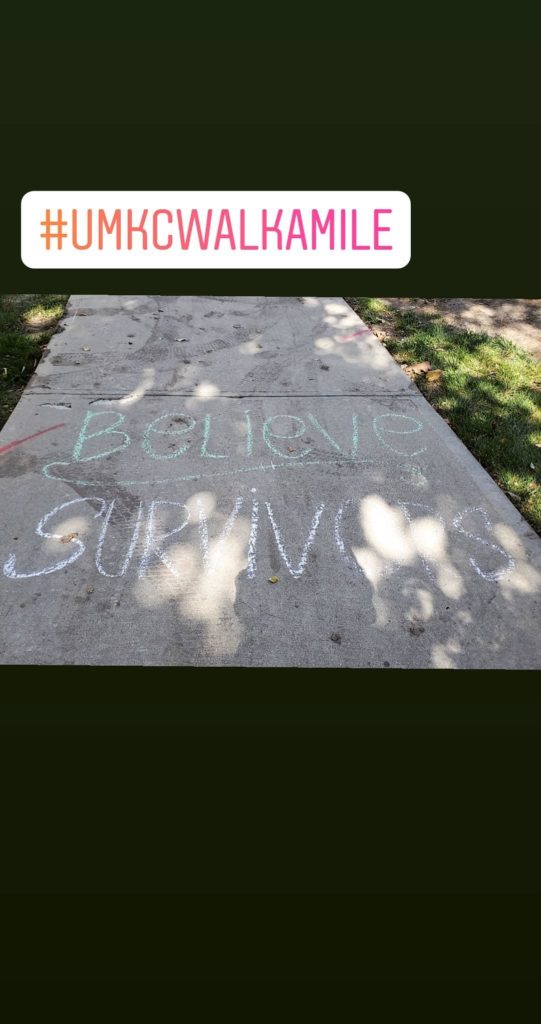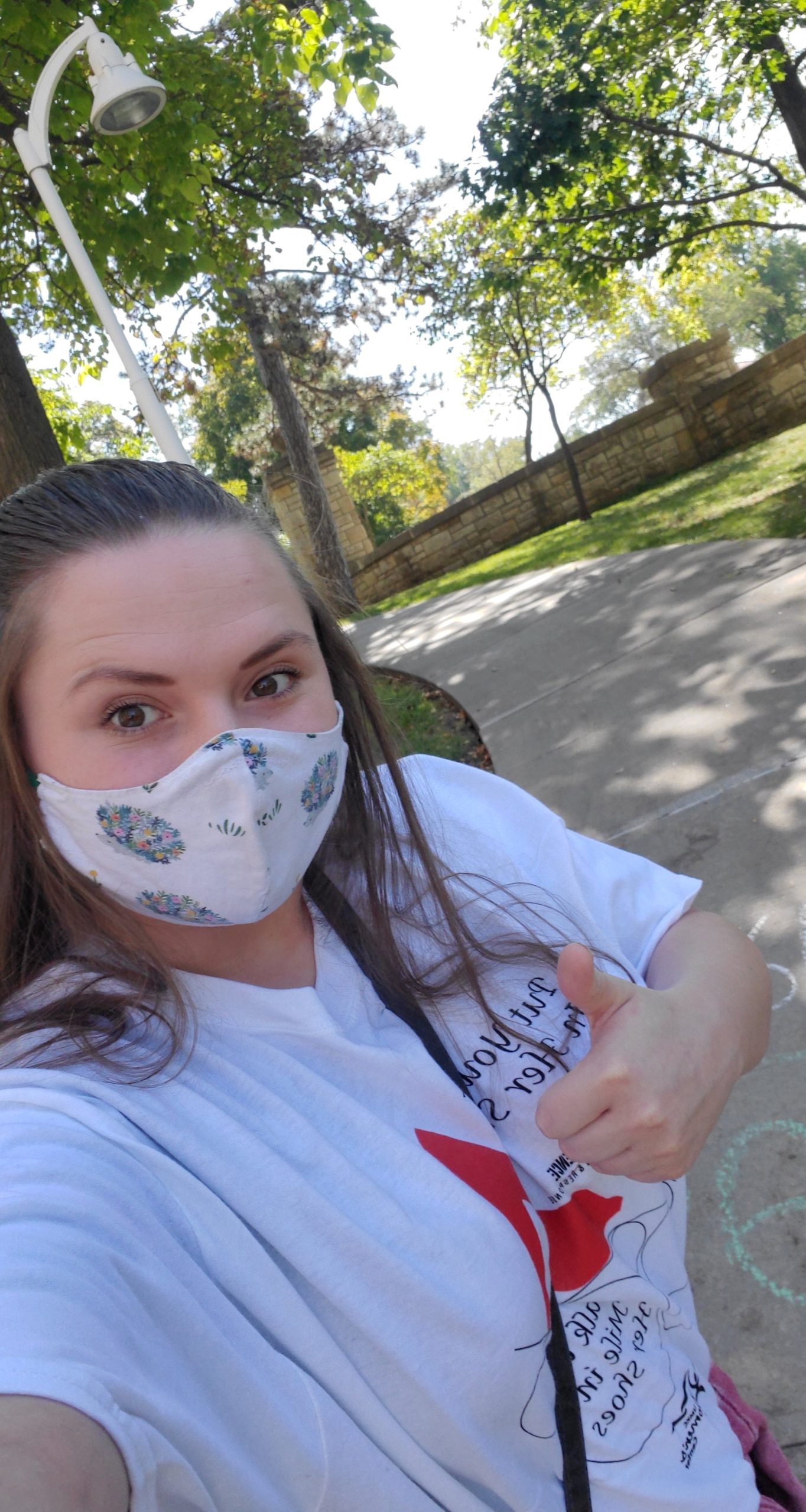We kicked off Domestic Violence Awareness Month on Tuesday October 6th, 2020 which marked the annual UMKC sector of Walk A Mile in Her Shoes, the international men’s march to stop rape, sexual assault, and gender violence. In spite of its binary name, UMKC encourages any and everyone to participate in this march to end gender based violence against all people. It’s an inclusive and fun way to shed light on some very dark issues that plague our society, especially on college campuses.
This day is usually a rowdy one, characterized by large groups of friends and allies, high heeled shoes, and picket signs that call for peace and love above all else. Together with most of the other student organizations, the women’s center would lead a march around campus that cultivated a crowd so large it would demand everyone’s attention. The acceptance, tolerance, and love would be tangible as the group walked by.
This year the event had to be done a little differently. With COVID an ever present risk, the Women’s Center wasn’t even sure we would be able to put on this event. I mean, it is an event about togetherness, and about standing in solidarity. We were pressed to find a way to make the same impact with this event, while remaining isolated, distanced, and safe. Being unable to gather on campus made it especially difficult for Emma, Abbie, and Morgan, the staff members responsible for the Walk A Mile event this year, as they couldn’t even put their heads (physically) together to try and figure out a new way to pull this off.
Despite the challenges though, our staff members, along with the help of their co-sponsors, were able to come up with a program that adhered to the campuses restrictions and rules, but also provided an opportunity for the student organizations and other students and faculty to physically stand with victims of sexual and gender based violence. Though we couldn’t lead a mass group of people around campus, Emma and Abbie did find a way to make sure the walk could still happen on campus. With chalk outlines on the sidewalk, and printed out maps, participants could stop at the Women’s Center table in the quad, grab a T-shirt, a map, and shoes (if they wanted them), and take the mile long walk on their own. With requirements to stay six feet apart, and to keep your mask on the entire time, students and faculty were able to bring a friend or two and take the self guided march for equality. They were encouraged to snap selfies and pictures of themselves and the walk to post to social media to be sure the importance of their walk reached as many people as possible.
I was not working the event, so I decided to pay Abbie, Morgan, and Emma a visit while they sat at their table waiting for people to come by and start their own walk. I wanted to see how this walk would affect me, and others around me, now that it seemed to be such a quiet and singular thing. Would it have the same impact? Could it possibly raise any awareness this way?
After arming myself with a T-shirt and a map I started my trek through the course all on my own. I was surprised to find that I actually felt very powerfully about what I was doing, even being all by myself. The chalk arrows on the ground eventually gave way to statistics about rape, sexual assault, and gender violence. They were so moving I found myself stopping and just taking in the information. I was learning so much! I ambled through the first half of the walk, stopping often and looking around. People were looking at me too, my shirt like a flashlight in the dark. They were curious. I saw that people on their way to class, or lunch, or wherever they were headed would not only look at me but look at the ground too. They would stop and read the messages written there. They were learning as much as I was.
as I was.
Then the statistics gave way to messages of support, encouragement, and empowerment towards the end of the walk. There were chalked instructions on how to handle someone who discloses having been hurt or assaulted, how to handle your own emotions if it happens to you, and simple messages like “Believe Survivors.” Needless to say this was a very powerful way to end the course. The mile came to an abrupt halt at the outside entrance to the Women’s Center. I stood there by myself for a minute, reflecting on what I had done, and knowing that no one really saw me do it, and there was no big production, but that I had learned and changed along the way anyway. I truly felt like an ally to and advocate for victims.
Later on in the day I did the walk again with a few friends, but we didn’t talk much throughout it. They, like me, were busy watching the ground, and learning about the realities of so many people in our community. I found that the quiet, solitary, introspective nature of the event was as powerful, if not more powerful, than the robust, celebratory atmosphere of previous years. For the first time since school started up again I felt connected to my campus, and to the other students here, especially as social media began to fill up with pictures of other people who had walked the same path I had that day. We had done it all on our own, but we had stood together with the victims of these heinous acts. We weren’t isolated in this act.
In all I think the event, though it was small, different, and difficult to pull off, was pretty successful. It accomplished exactly what it set out to do and that was to bring people together in the name of reform, justice, love, and peace, which is one hell of an accomplishment, especially now.
